When people think of breathtaking natural landscapes, they might picture rainforests, coral reefs, or mountain ranges.
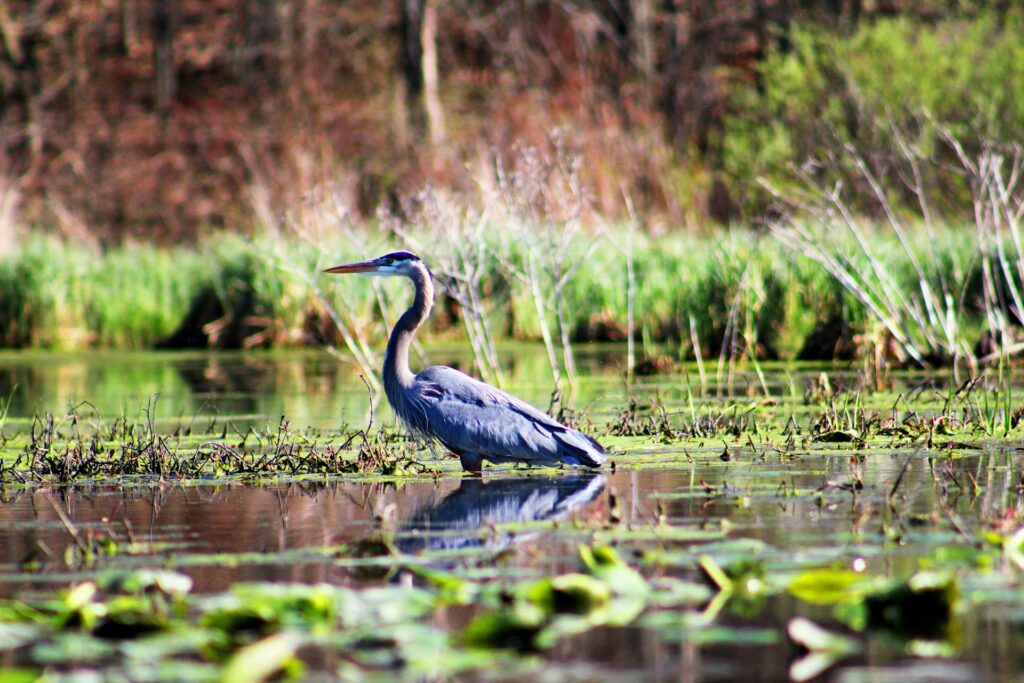
Wetlands don’t always make the list, but they should. These rich, waterlogged ecosystems are among the most productive, diverse, and ecologically important environments on Earth. They’re also among the most threatened. Despite their critical role in supporting life and providing environmental services, wetlands are disappearing at an alarming rate.
Wetlands include a variety of landscapes—marshes, bogs, swamps, floodplains, peatlands, and fens. Some are freshwater, others are saltwater or brackish. They occur inland and along coastlines, in tropical zones and colder regions alike. What they all have in common is their ability to support life and provide crucial functions for both wildlife and humans. Yet despite their importance, the world has lost about 35% of its wetlands since 1970, according to the Ramsar Convention on Wetlands. This decline is happening faster than the loss of forests and shows no signs of slowing down.
Wetlands support an extraordinary variety of life.
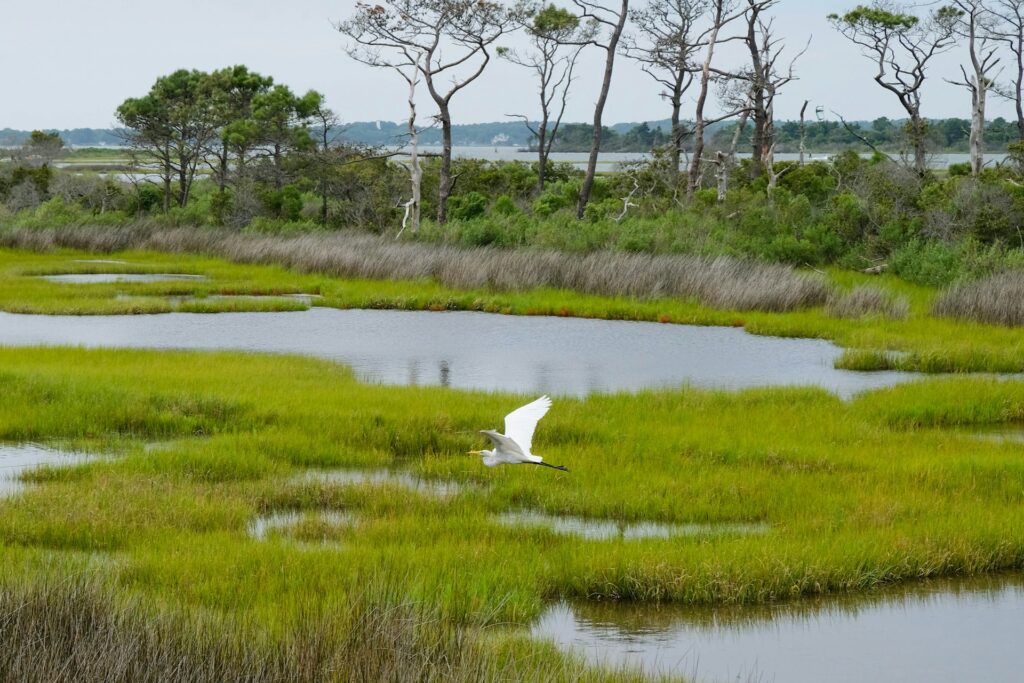
Wetlands are biodiversity hotspots. They’re home to more than 40% of the world’s plant and animal species, many of which can’t survive anywhere else. Amphibians, reptiles, waterbirds, fish, insects, mammals, and a staggering array of plants depend on wetlands for habitat, breeding grounds, and food sources.
Frogs and salamanders lay their eggs in shallow wetland pools. Migratory birds rest and refuel in these areas during long seasonal journeys. Fish like salmon and eels use wetlands as spawning grounds. Wetlands are often the starting point for countless food chains, feeding predators further up the ecological pyramid.
In the UK, wetland areas like the Somerset Levels, Wicken Fen, and the Norfolk Broads support a wide range of species, including bitterns, kingfishers, otters, and dragonflies. Globally, unique wetlands like the Pantanal in South America, the Everglades in the US, and the Sundarbans in India and Bangladesh support species found nowhere else, such as the jaguar, manatee, and Bengal tiger.
When wetlands are destroyed or degraded, these species lose critical habitat. For many, there’s simply nowhere else to go. The result is a steep decline in species richness and abundance, threatening the stability of entire ecosystems.
They act as natural water filters.
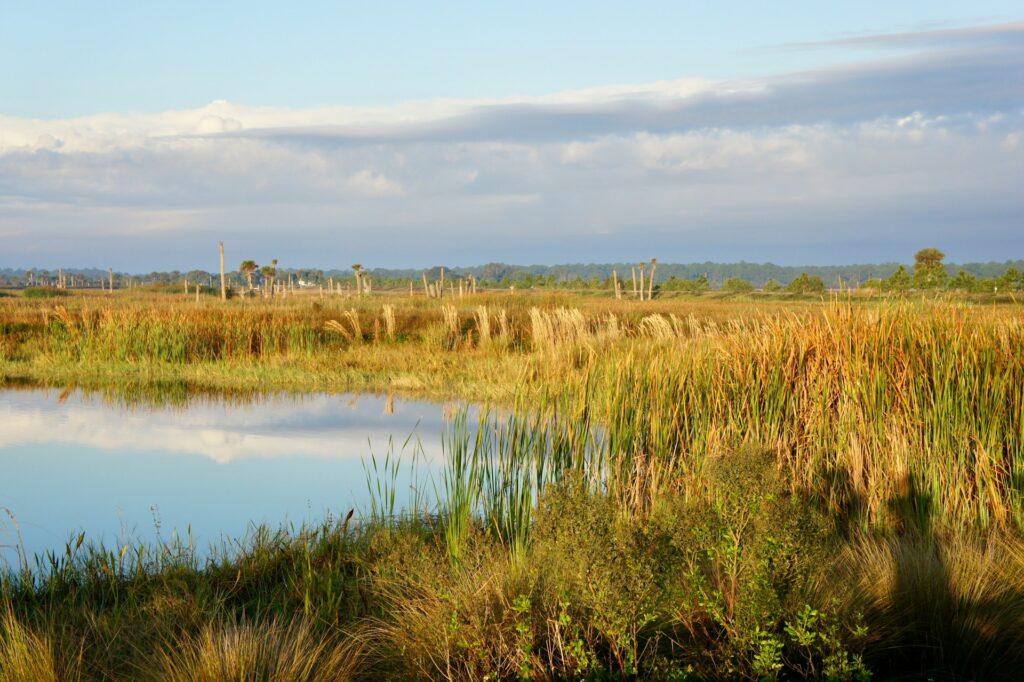
Wetlands function like nature’s kidneys, filtering and purifying water as it flows through them. Wetland plants and soils trap sediments, absorb nutrients, and break down pollutants, removing harmful substances like nitrates, phosphates, pesticides, and heavy metals before they reach rivers, lakes, and groundwater.
In farming regions, this filtration service is essential. Runoff from fertilisers and animal waste can lead to nutrient overload in downstream waterways, triggering algal blooms and dead zones. Wetlands buffer this effect, acting as a line of defence for water quality.
Urban wetlands also help manage pollution in towns and cities. When designed well or restored thoughtfully, they reduce the load on wastewater systems and provide natural drainage that’s both cheaper and more sustainable than engineered alternatives.
Wetlands provide flood protection.

One of the most valuable but underappreciated services wetlands offer is flood control. Wetlands can absorb, store, and slowly release large volumes of rainwater, reducing the severity of floods. Their sponge-like nature makes them effective at buffering surrounding areas from flash floods and storm surges.
Coastal wetlands such as mangroves and salt marshes play a vital role in protecting coastal communities from extreme weather events. During hurricanes, typhoons, or tsunamis, these habitats act as shock absorbers, reducing wave energy and limiting the damage to infrastructure and human lives. The economic value of this service alone runs into billions of pounds annually.
With the climate crisis increasing the frequency and intensity of storms, the role of wetlands in flood mitigation has never been more vital.
They store carbon and fight climate change.
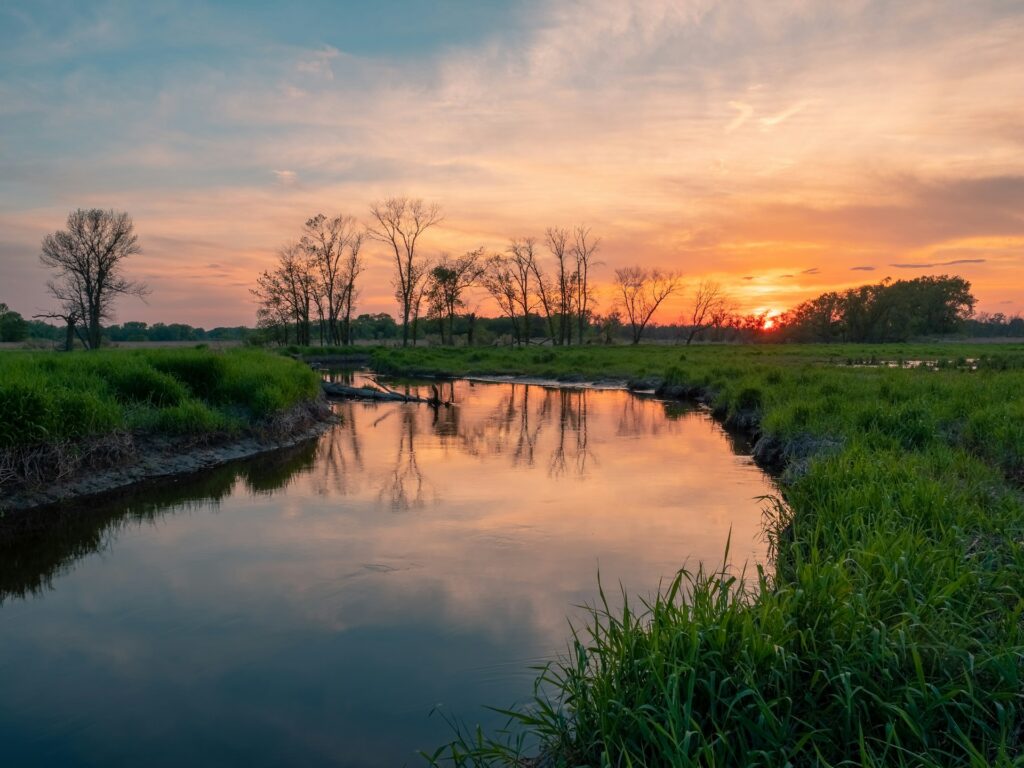
Peatlands—wetlands with a thick layer of organic soil—are among the most effective carbon sinks on the planet. Although they cover just 3% of the Earth’s surface, they store more carbon than all the world’s forests combined, according to UNEP.
When wetlands are drained, their peat dries out and begins to oxidise, releasing carbon dioxide into the atmosphere. In many cases, these emissions turn wetlands from carbon sinks into carbon sources. This makes their protection and restoration one of the most cost-effective and impactful strategies for tackling climate change.
Restoring wetlands also enhances resilience. Healthy wetlands can buffer temperature extremes, support water retention during droughts, and reduce wildfire risk in surrounding landscapes, all of which are becoming more pressing in a warming world.
Wetland biodiversity supports human life.
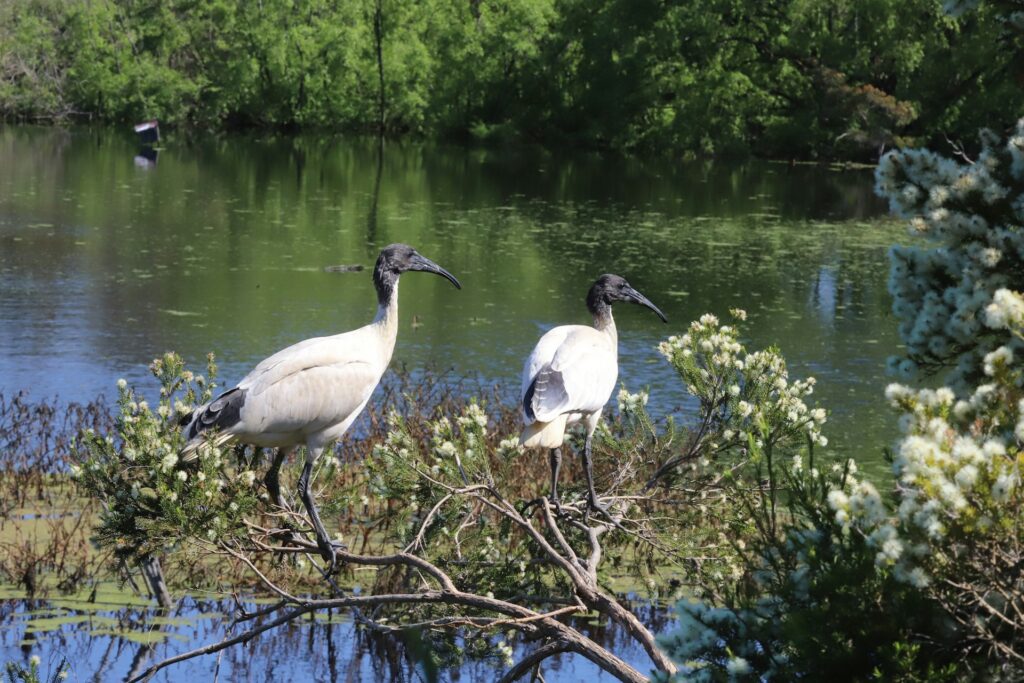
Humans benefit from wetlands in countless ways. They provide fresh water, fish, wild foods, timber, and medicinal plants. They support agricultural land and recharge aquifers. Wetlands offer recreational opportunities, tourism income, and aesthetic value. For many Indigenous and rural communities, they also hold deep cultural and spiritual significance.
In developing countries, wetland resources often form the backbone of local economies. Rice, a staple crop for more than half the world’s population, is grown primarily in wetlands. Fish harvested from wetlands are a major source of protein and income in many parts of Africa, Asia, and Latin America.
The biodiversity that thrives in wetlands also supports the pollinators, predators, and decomposers that keep natural systems functioning. Without them, agricultural productivity, ecosystem balance, and human health all begin to unravel.
Threats to wetlands are mounting.
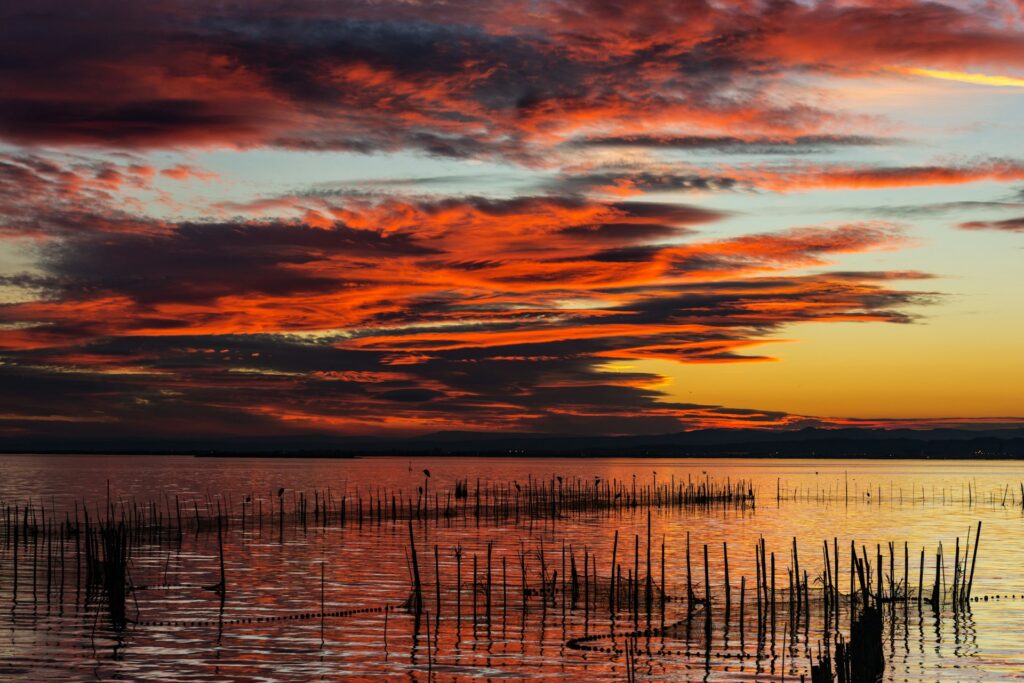
Despite their value, wetlands are constantly under pressure. Agriculture remains the single biggest cause of wetland loss, particularly through drainage and conversion into farmland. Cities continue to expand into wetland areas, covering them with concrete and displacing wildlife. Infrastructure such as dams and roads fragments wetland systems and disrupts water flows.
Pollution from fertilisers, pesticides, and industrial waste contaminates wetland habitats. Invasive species outcompete native flora and fauna. Climate change is shifting rainfall patterns, altering water tables, and raising sea levels, all of which change the way wetlands function and limit their ability to recover.
In many countries, wetlands lack legal protection or are poorly managed, even when designated as conservation sites. There’s often a disconnect between policy and practice, and economic pressures frequently outweigh environmental concerns.
What we can do.

Protecting wetlands requires both systemic change and grassroots action. On a policy level, governments need to strengthen wetland protections, enforce environmental regulations, and integrate wetlands into land-use planning, climate policy, and agricultural reform.
Restoration efforts are gaining ground in many places, with rewetting of peatlands, removal of invasive species, and reintroduction of native plants showing real results. Supporting organisations like the Wildfowl & Wetlands Trust, Ramsar, and Wetlands International can help fund and scale these efforts.
As individuals, we can:
Conserve water to reduce demand on freshwater systems
Avoid products linked to wetland destruction (e.g., unsustainable palm oil)
Support wetland-friendly agriculture and fisheries
Reduce our use of harmful chemicals
Educate others about wetland importance
Visit and volunteer at local wetland reserves
Public awareness is key. The more people understand what wetlands do for us, the more pressure there is to preserve them.
Wetlands are often hidden in plain sight—quiet, complex, and teeming with life.
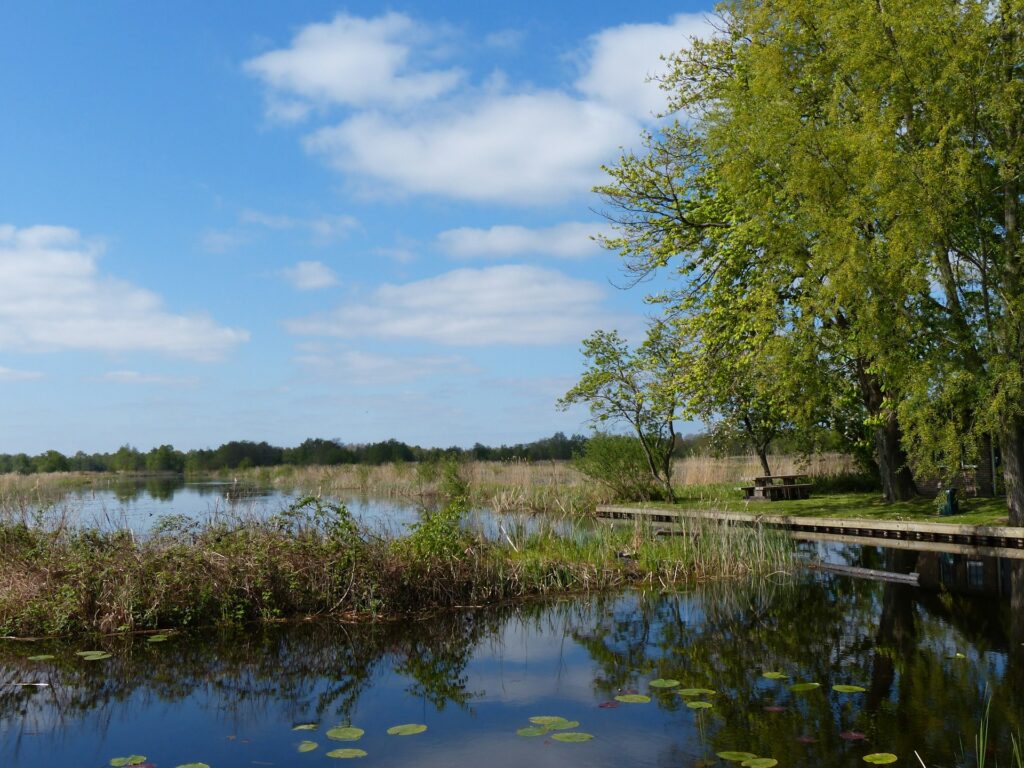
They’re not only essential to biodiversity, but also to climate regulation, water security, and human wellbeing. As environmental challenges mount, the role of wetlands becomes more vital than ever.
They’re not an optional extra in the landscape, they’re a core part of how ecosystems stay balanced and resilient. Protecting wetlands means preserving the intricate web of life they support, and in turn, securing a more stable future for ourselves. If we want to protect biodiversity, reduce emissions, and strengthen communities, safeguarding wetlands isn’t just important, it’s absolutely essential.